12DOVE Verdict
Apiary puts novel twists on the worker placement genre by powering its worker bees up and down and changing the dynamics of how opponents handle occupied spaces on the board. Combining those mechanics with elements or resource management, engine building, and tile placement creates a rich game experience with a huge array of strategies to experiment with. That complexity may be intimidating to new players, but it provides a high level of replayability.
Pros
- +
Well-made pieces that fit neatly in the box
- +
High replayability
- +
Avoids some of the pitfalls of worker placement games
- +
Cute theme based on bee behaviors
Cons
- -
Complexity might deter some players
- -
Can feel a bit too much like multiple games fused together
Why you can trust 12DOVE
Apiary is off to a good start before you even open the box. Bees are an ideal creature to build a worker placement game around since they are notoriously industrious and spend their time gathering resources, building structures, and dealing with a complex hierarchy. Designer Connie Vogelmann adds the extra twist here of the social insects doing all that in space, with competing factions of highly evolved sentient honeybees finding new planets to gather resources and expand their hives.
The flavor and mechanics of Apiary are a bit of a hodgepodge; it mashes up the cozy nature-based themes found in many Euro games (like Wingspan) with an exploration system reminiscent of Expeditions and the space-based tile laying of Planet Unknown. While Apiary doesn’t excel in any one area as much as some of the games it draws from, the combination creates a highly complex and replayable experience best for veteran players.
Apiary features & design
| Price | $69 / £69 |
| Ages | 14+ |
| Players | 1 - 5 |
| Complexity | High |
| Genre | Strategy |
| Lasts | 60 - 90mins |
| Designers | Connie Vogelmann |
| Publisher | Stonemaier Games |
| Play if you like | Expeditions, Viticulture, Bees |
- Explore planets to gather resources
- Expand your hive while playing to your faction’s strengths
- Strategically deploy workers to use their variable power and hibernate them at the right time
Apiary is at its core a worker placement game, with each player starting with three bees that they can deploy to spaces around the map to complete a wide variety of tasks. You can recruit more bees by growing your hive, which can also provide the opportunity to physically expand your board to provide more space to place tiles. The trick is that each of the colorful bees is represented by a piece that can be rotated to show its current strength, starting at one and topping out at four.
The stronger the bee you’re using, the more options you have. Your first turns will probably be spent gathering resources by navigating the charmingly chunky bee-shaped mothership to new planets to gather resources and exploration tokens that provide extra bonuses. Stronger bees can move more spaces, making it easier to get what you want (a familiar concept seen in many of the best board games).
What follows is a snowball effect. While each faction’s map starts with a few spots where they can stash resources, you’ll need to quickly build more farms for extra storage space and consider investing in other upgrade tiles that can give you powerful immediate benefits or allow you to build up an engine to make future actions more efficient. Weak bees can only pick up the first of a spread of tiles, while more powerful ones give you access to more options.

Leveling up those bees requires planning. When all your bees are on the board, you need to take an action to retrieve them. But that round off is a time for the hive to grow, harvesting resources from your farms while also powering up the returning bees to their next level. When a level four bee would return to the hive, it instead hibernates. This lets you place a special token on the board to gain an immediate reward and compete for an end of game bonus. The game ends once a player has placed all of their hibernation tokens, so while it can feel like a blow to lose your most powerful workers, the churn is important.
Some actions can’t even be taken unless your bee is at full power either, so you need to think very carefully about the best way to use them before they hibernate.
In terms of looks, the game pieces are simple but evocative, with wooden tokens representing pots of honey, drops of water, or pollen-filled flowers. Everything also fits neatly back in the box, which has conveniently shaped containers for the different tiles to make it easy to set up next time.
Apiary gameplay
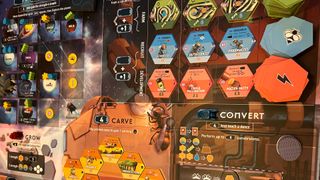
- A two-sided board changes the layout based on player count
- Pivot between resource-gathering and focusing on end-game points
- Choose between confirmed rewards and potential gains
The way other players interact with occupied spaces is very different in Apiary compared to typical worker placement games. Spaces are never truly blocked since another player can always bump your bee. This can send it back to your hive, where it would be powered up and save you the action of needing to retrieve it, or bound it further down a shared tree. Players can benefit from each other’s strength, a dynamic that means you’ll really want to pay attention to what other players are up to.
And there’s a lot to be up to! You can earn points by filling your hive with tiles, which are also worth points individually. You can focus on improving your favor with the queen, which gives a slow drip of points that accelerates rapidly once you reach a certain threshold. You're able to send a maxed-out bee to build a carving, a special tile worth a large amount of points at the end of the game if specific conditions are met. You can even base a strategy on collecting as many exploration tokens as possible to power seeds you’ve planted, or eschew seeds entirely if you have the right carving. In the vein of so many board games for adults, there are many routes to victory.
However, some actions feel like traps — teaching a dance to build a custom resources conversion tile rarely feels worth it considering it requires a maxed out bee to do and the benefits you receive when other players use your dance are fairly minor.
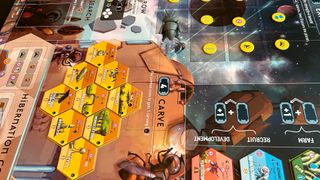
Exploration follows a very similar model to the Expeditions board game, with players opting to land on an unknown planet and take an exploration token that provides an immediate reward (like a resource or queen’s favor) and then flip a planet tile or visit one that has already been revealed and gather its resources. You’ll have to plan carefully ahead to decide what resources you want to gather, since storage space starts at such a premium and you need to spend basic resources to get more storage.
Speaking of other players, Apiary has a two-sided board to ensure a balanced experience based on player count. The automated AI for a solo game is too random to provide much of a challenge unless you’re using a higher difficulty to give them more points for all their actions. Still, it’s a fine way to get to see more cards and test a few strategies between multiplayer rounds.
The four - five player board creates a larger planetary map to explore and more tiles to build, dividing the actions taken between building farms and other basic structures. It helps ensure that you still feel the restrictions on movement and what tiles you can purchase even if you’re more likely to be boosted by another player. You’re more likely to have your bees bumped in games where the board is maxed out at three or five players, meaning you might want to focus less on the income rewards you get from the farms on retrieval. There’s a landing area where you can place bumped bees to collect their rewards next time you take the retrieve action, but unless you’ve really invested in farms, that’s rarely going to be better than capitalizing on the momentum of taking another turn with the bee your opponents helpfully gave you back.
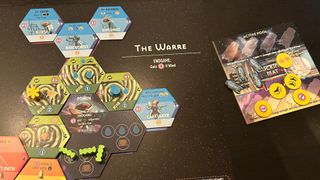
Each planet has a spot for one to three basic resources, which a player chooses when they visit until the spots are filled. That eventually creates a tableau of planets collaboratively crafted to cater to various strategies. Planets can also have powerful secondary effects that can only be activated by a four powered bee and you’ll need to think ahead especially in games with more players if you want the chance to use them, since you can never begin and end an exploration turn on the same planet.
It’s a satisfying initial loop that breaks down a bit later in the game when all of the planets are revealed and players need to focus mostly on converting basic resources into advanced ones so they can earn points. With most engine building games, a key part of a strategy is understanding when to make this pivot, but the nature of Apiary’s workers makes it very clear that you need to shift tactics as soon as you have a bee with four power. By then you’ll just have to hope you’ve laid down strong groundwork for whatever strategy you plan on pursuing and work to keep building on it as players race to end the game.
A wide variety of starting factions, who each will favor different types of tiles and tactics, and starting maps with their own rewards for filling them with tiles, provides strong replayability. There’s a list of starting factions with fairly basic abilities recommended for a first play through, but once you’ve got the hang of the core mechanics you can start playing by giving each player a choice of two so they can try something new or just the one that fits best with their favored strategy.
Should you buy Apiary?
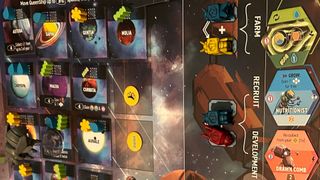
If you’re an experienced board game player who enjoys the worker placement genre, Apiary is a great addition to your collection. Its twist on the core mechanics creates an experience that is more collaborative than focused on blocking other players and transforms the way you think about the game. Beyond the core elements of worker placement, Apiary also brings in aspects of several other popular board game genres, providing the tactile satisfaction of tile laying and the push your luck strategies of exploration. The resource conversion aspect isn’t as well developed as in other games, but there’s enough going on for Apiary to entertain groups of veteran players across multiple games.
Buy it if...
✅ You love worker placement board games
Apiary takes the popular genre and puts a novel twist on it that removes some of its biggest weaknesses and requires a new way of thinking about managing your resources
✅ You like testing new strategies
There are so many ways to gain points in Apiary that it’s hard to figure out the best goals to pursue until you’ve played a few times with different factions and end of game objectives
Don't buy it if...
❌ You’re intimidated by high complexity games
Apiary combines many board game mechanics into one, and if you haven’t played many genres that fusion can make it hard to keep up
❌ You don’t like bees
Allergic to bees? Hate honey? Then the theme probably won’t appeal to you.
How we tested Apiary
Disclaimer
This review was conducted using a sample provided by the publisher.
Our reviewer played multiple in-person sessions of Apiary with different player counts to get a better sense of how the experience differed each time. They also directly compared it to competing games.
You can learn more about our process via the 12DOVE review policy, or by visiting our guide to how we test board games.
For more recommendations, be sure to check out our guide to the best cooperative board games and must-have 2-player board games.

Samantha is a freelance writer that specializes in tabletop gaming. Her credits include Dicebreaker, IGN, Polygon, and The A.V. Club.

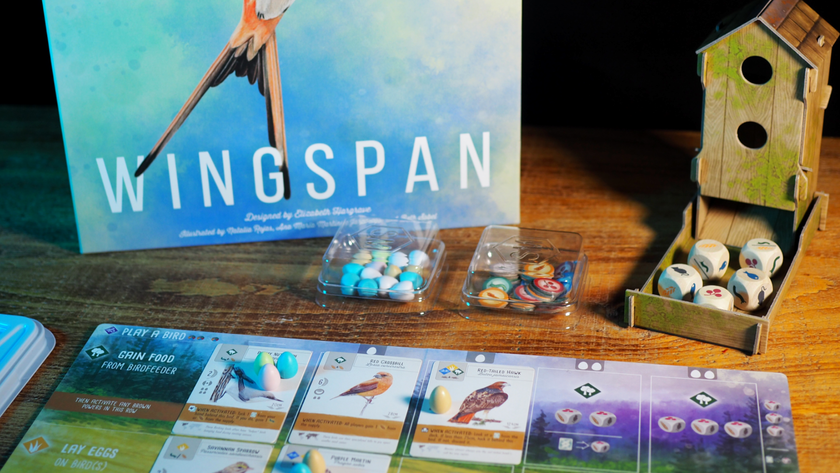
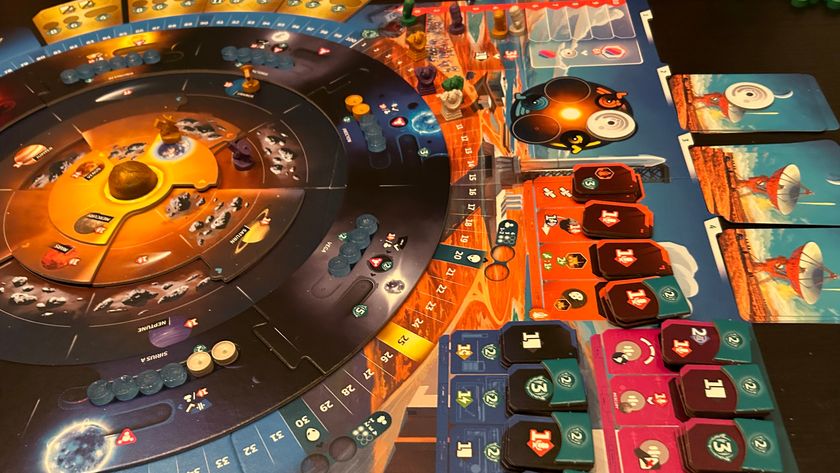
















After four years, Disney's anime show based on hugely popular gacha game gets a proper trailer
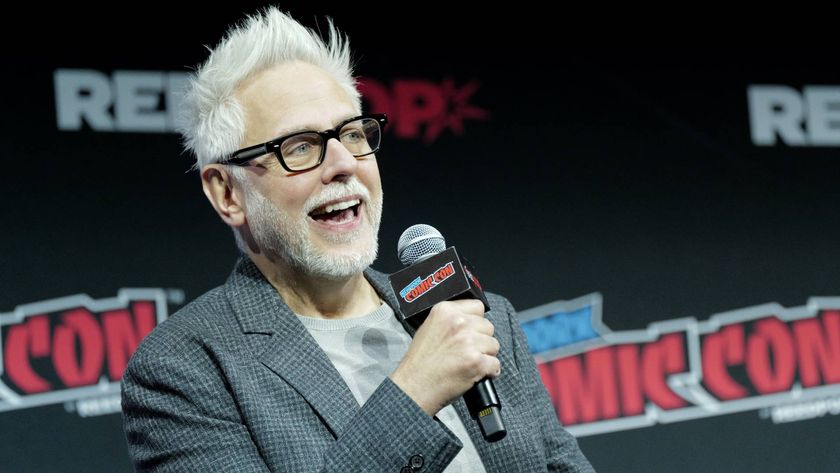
James Gunn reacts to Jason Momoa almost spoiling his Lobo costume in an interview: "I just want to profoundly thank Jason’s publicist"

Daredevil star Charlie Cox says keeping his Spider-Man: No Way Home cameo a secret for two years was a "nightmare"




